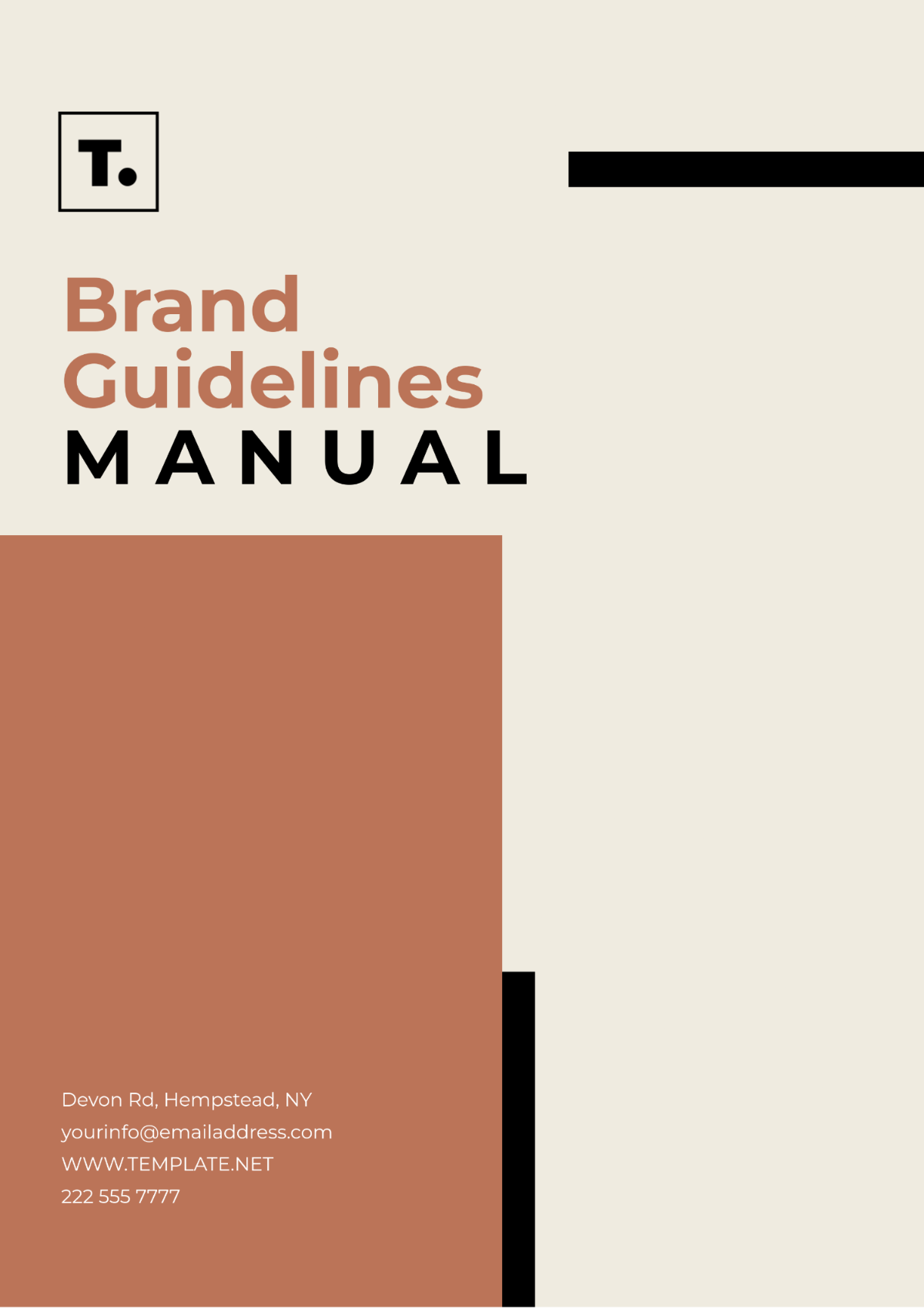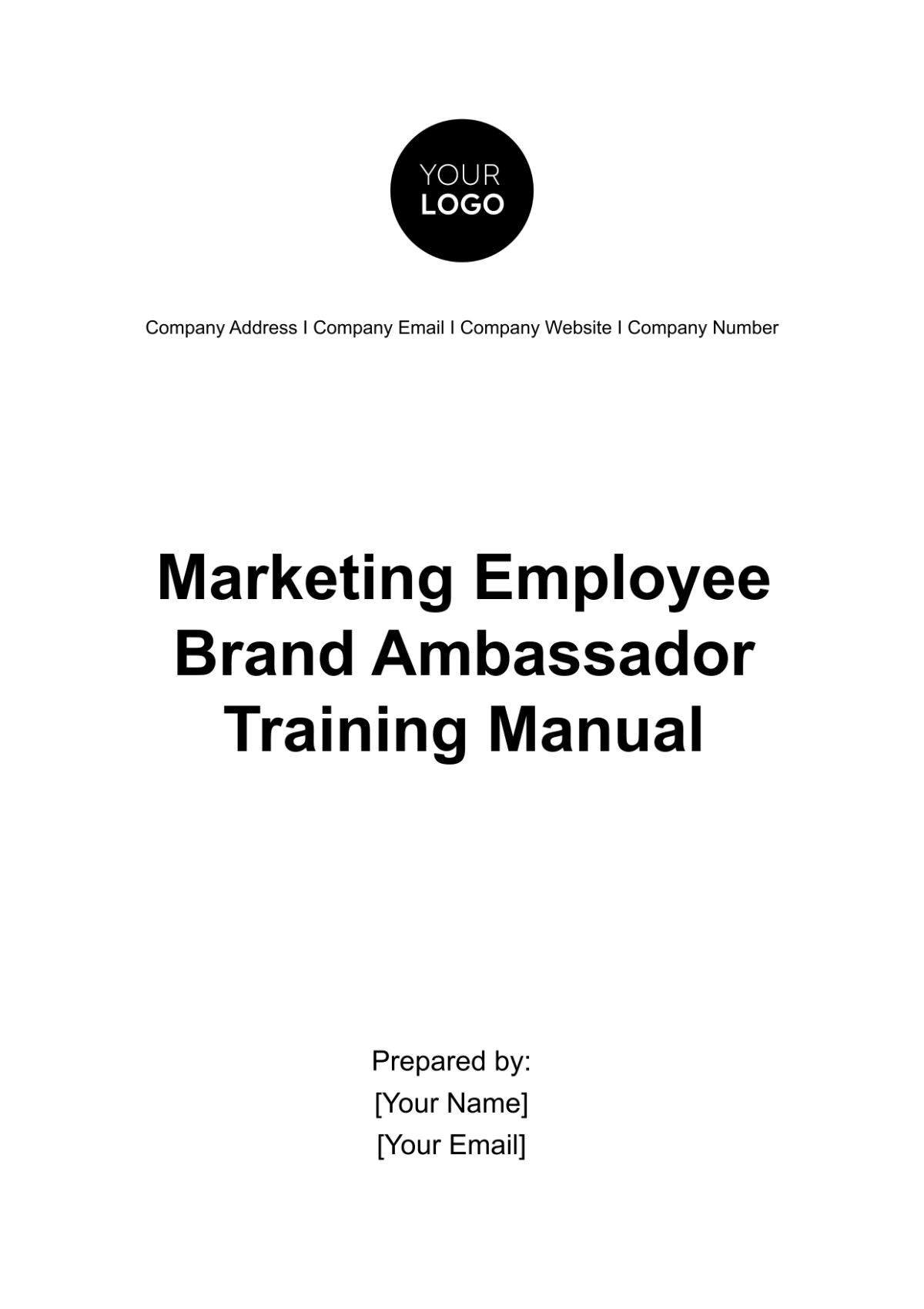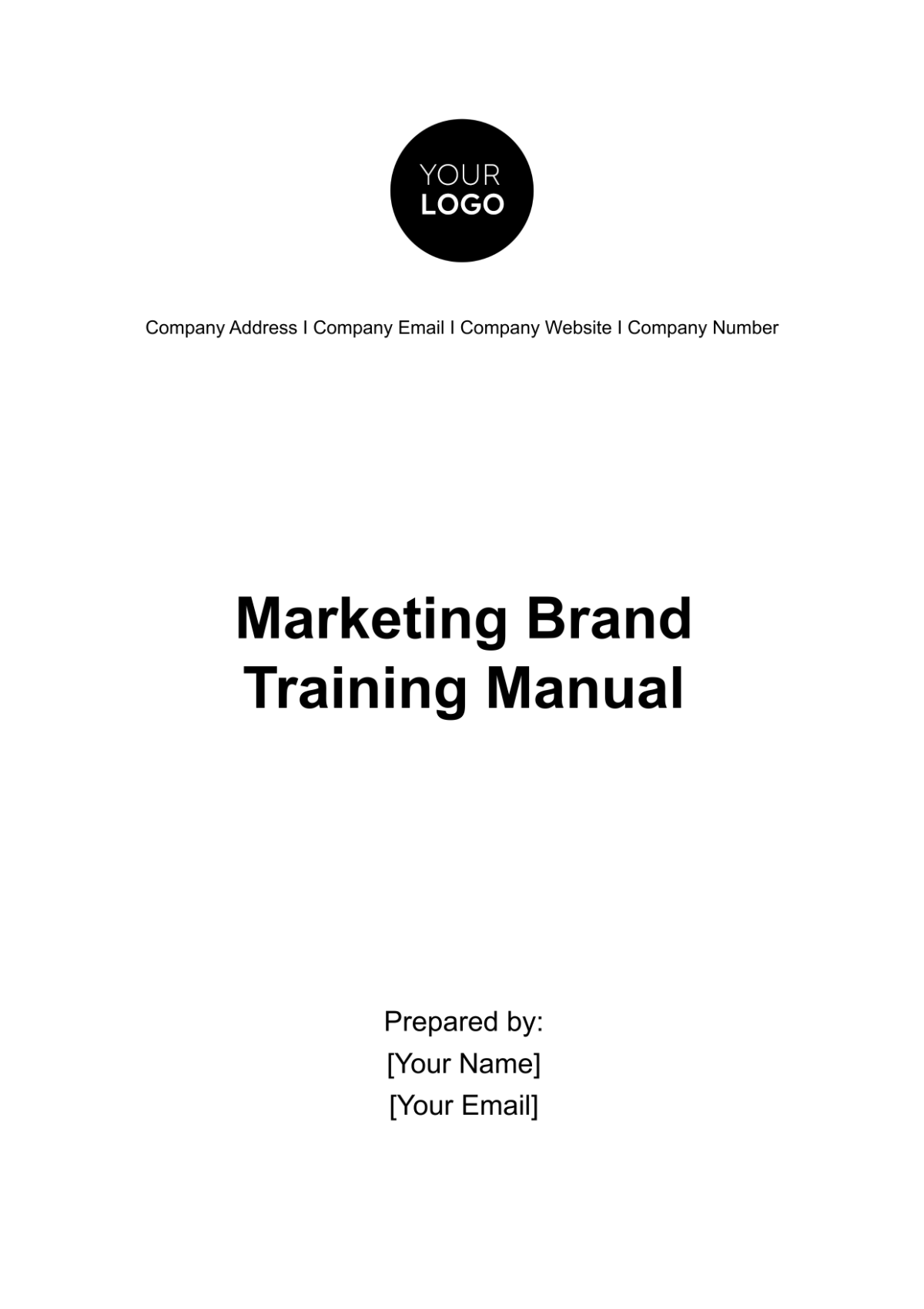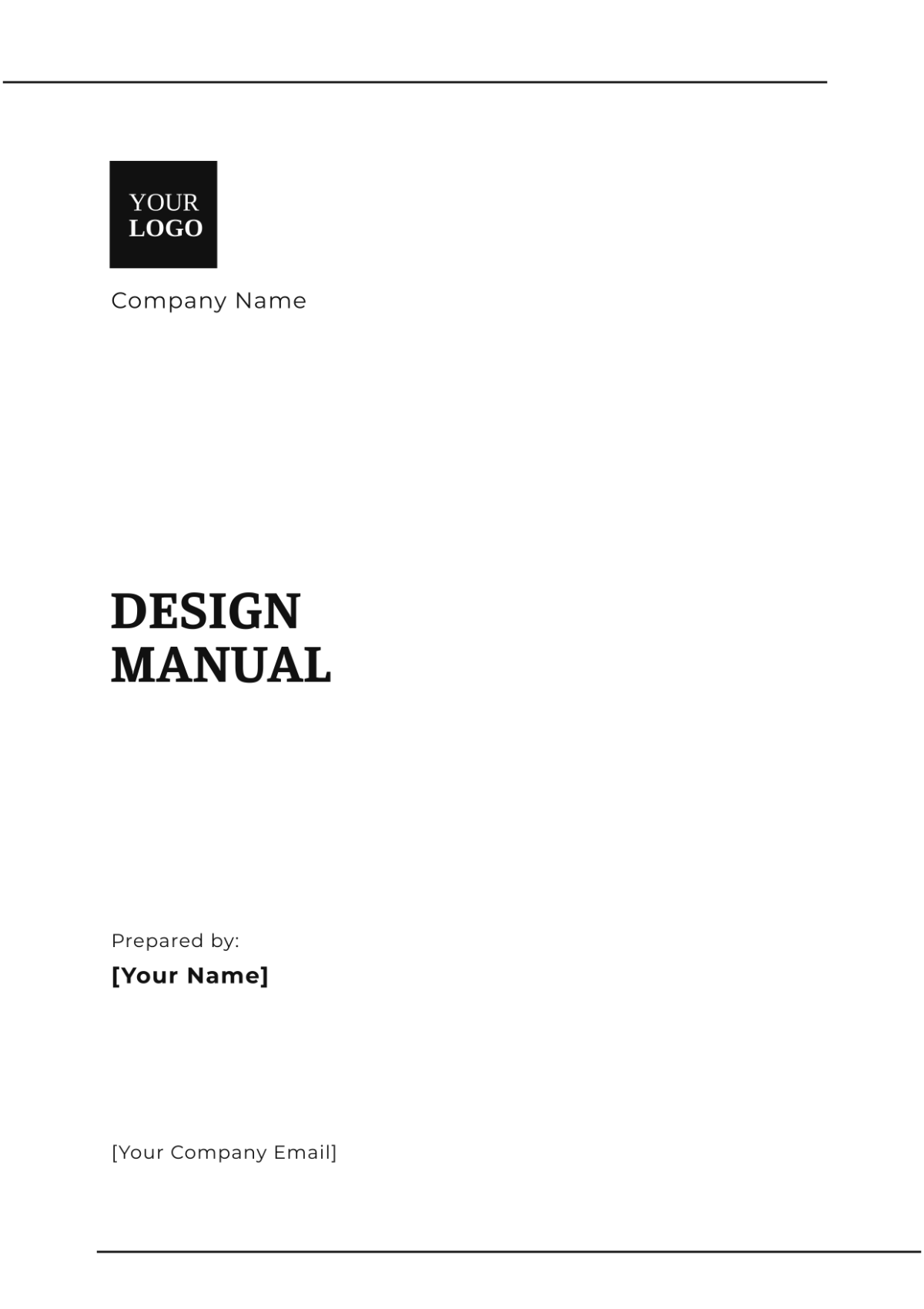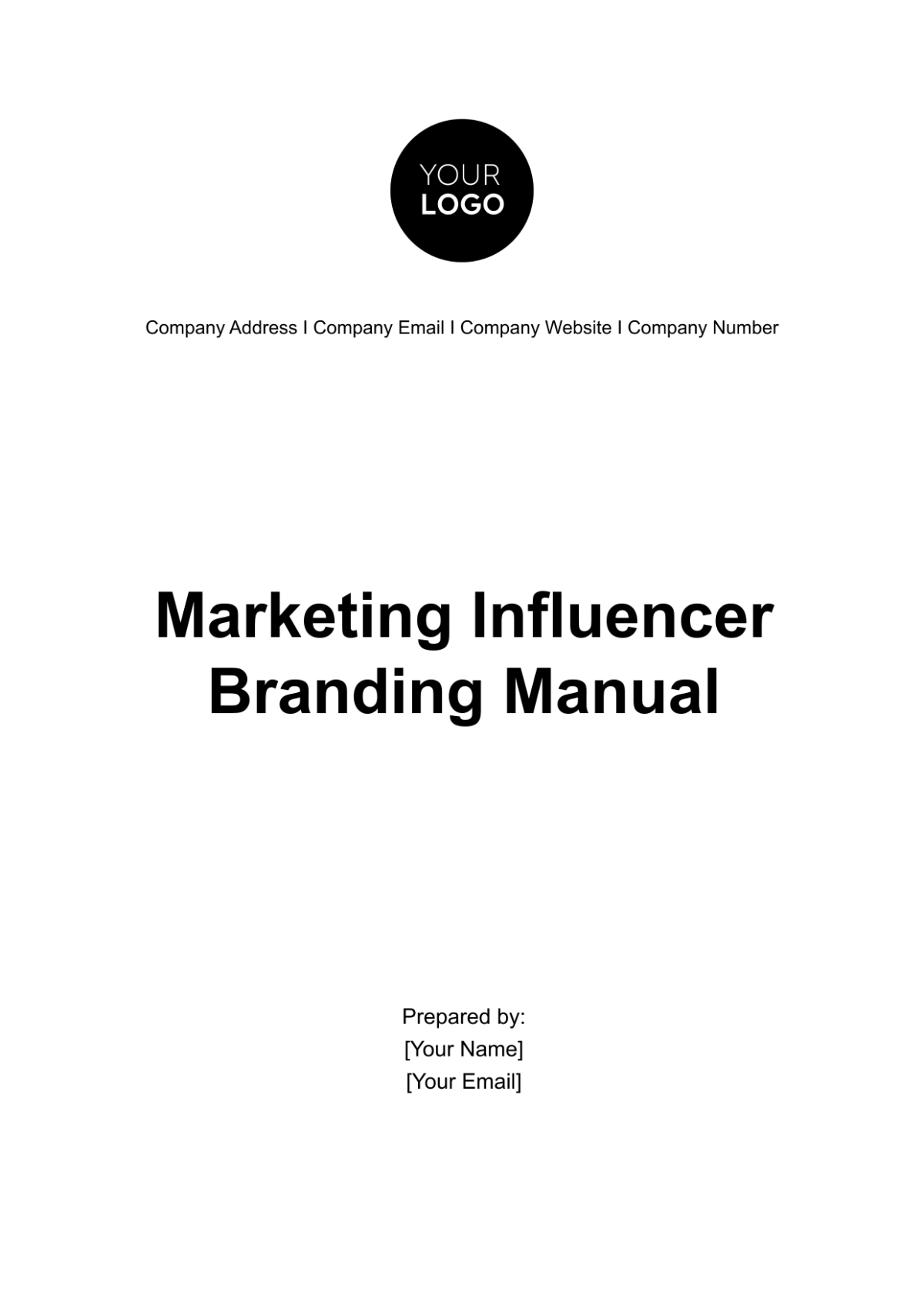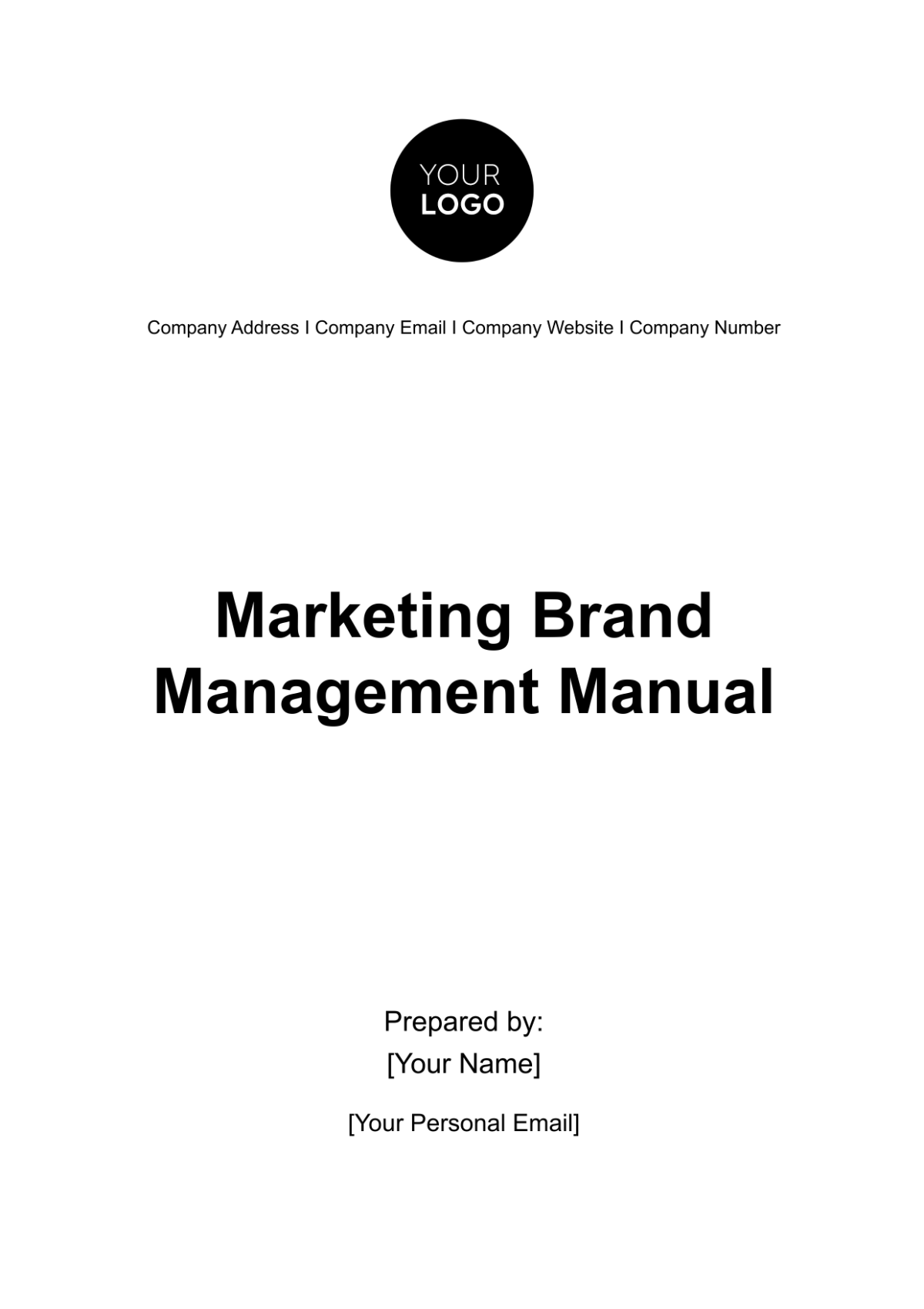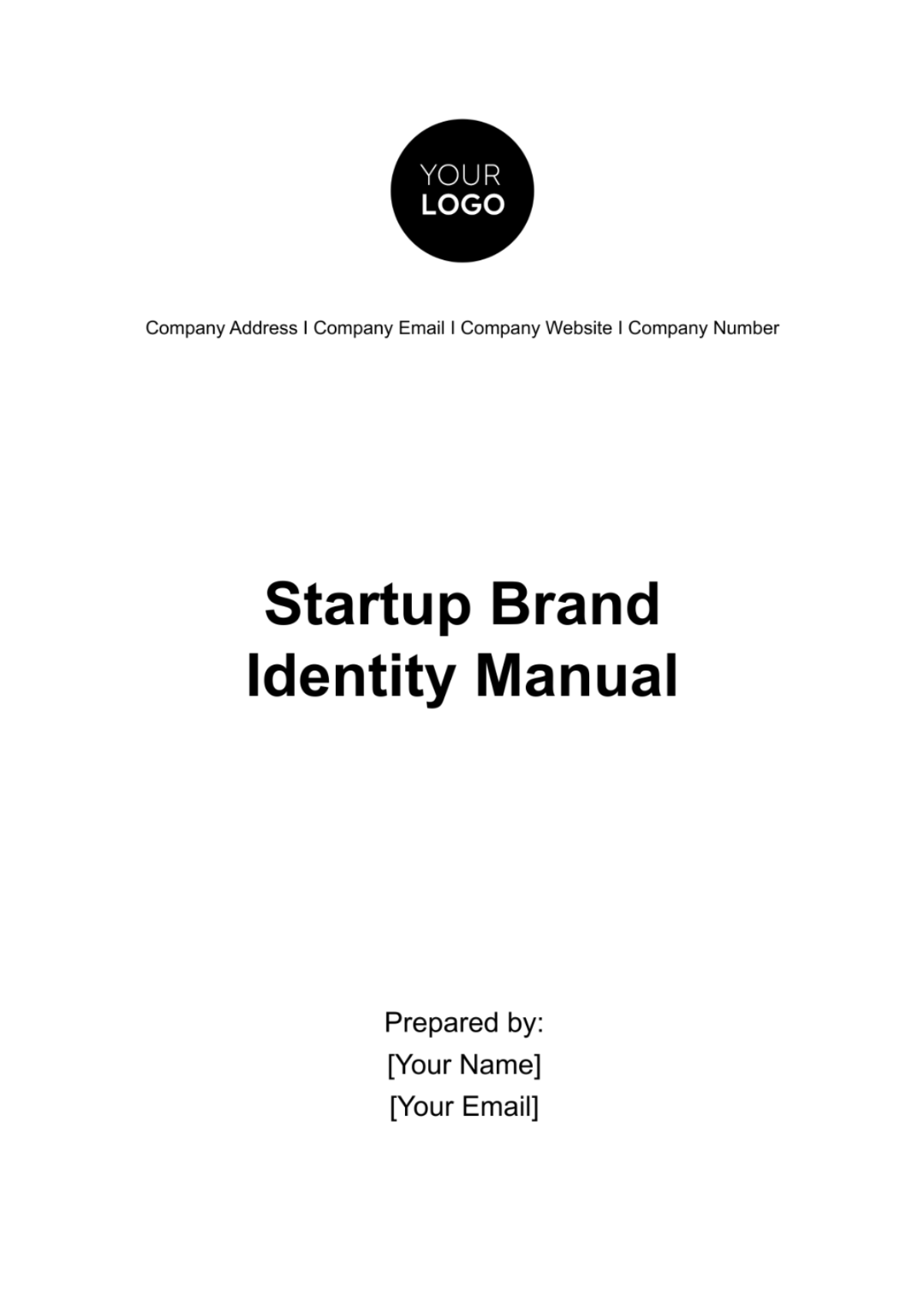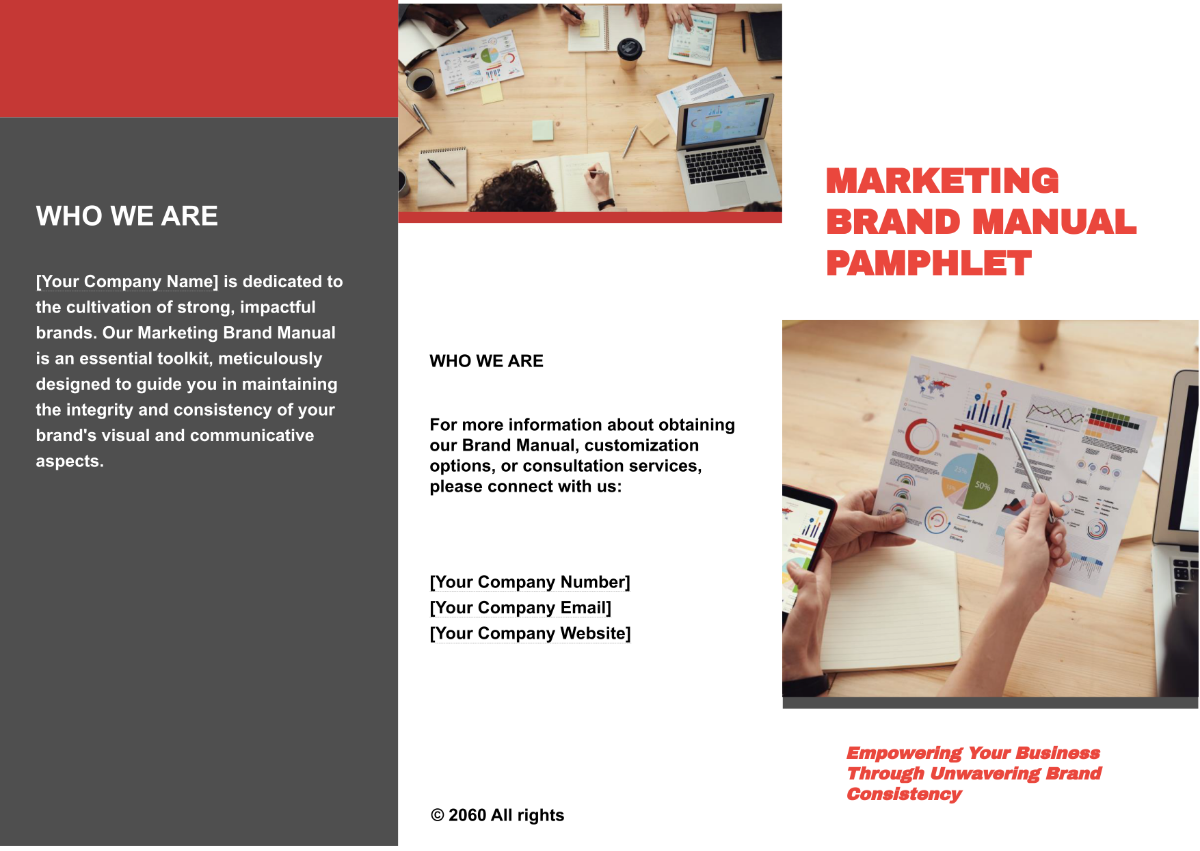Startup Brand Positioning Manual
Introduction
Welcome to [Your Company Name]'s Brand Positioning Manual, a definitive guide designed to navigate the complexities of establishing a strong, coherent, and distinctive brand identity in the competitive landscape of today’s market. This manual is crafted for our team, stakeholders, and partners, ensuring that every aspect of our brand's interaction with the world is aligned with our strategic vision and core values.
The essence of brand positioning lies in creating a unique impression in the customer's mind so that they associate something specific and desirable with your brand that is distinct from rest of the marketplace. This manual outlines how [Your Company Name] will achieve this, from understanding the fundamental principles of brand positioning to implementing our strategy across all customer touchpoints.
Our objective is clear: to carve out a niche in the market that [Your Company Name] can own, to resonate deeply with our target audiences, and to build a brand that endures and evolves in the hearts and minds of our customers.
Section 1: Understanding Brand Positioning
Definition of Brand Positioning
Brand positioning is the strategic process of setting your business apart from your competitors in a way that builds preference for your brand among your target audience. It involves identifying and attempting to “own” a marketing niche for a brand, product, or service using various strategies, including pricing, promotions, distribution, packaging, and competition.
The goal is to create a distinct and lasting position in the marketplace that appeals to the needs and emotions of your target audience, making your brand the preferred choice. To achieve effective brand positioning, [Your Company Name] must deeply understand its target customers, including their needs, wants, and how they perceive different brands. This understanding allows for the development of a unique selling proposition (USP) that highlights the benefits and features of your products or services that are most relevant to your audience.
Moreover, brand positioning is not static; it requires ongoing analysis and adaptation to respond to market trends, competitive pressures, and changes in consumer behavior. This dynamic process ensures that [Your Company Name]'s brand remains relevant and continues to resonate with its target audience over time. Through consistent and strategic positioning, [Your Company Name] can effectively communicate its value proposition, differentiate itself in a crowded marketplace, and build a strong brand that attracts and retains loyal customers.
The Role of Brand Positioning in Marketing Strategy
Brand positioning is not just a tagline or an advertisement but a foundational strategy that informs and guides marketing decisions. It influences how a brand is perceived, dictates the direction of marketing efforts, and determines the messaging communicated across all channels.
Effective brand positioning establishes a unique space for [Your Company Name] within the competitive landscape, serving as a beacon that attracts the target audience by resonating with their specific needs and desires. It sets the stage for emotional and rational connections, making the brand not only recognizable but also preferred among alternatives. This strategic positioning becomes the essence of the brand's narrative, shaping product development, customer service, and even the corporate culture. By clearly defining what [Your Company Name] stands for, brand positioning turns marketing from a series of isolated efforts into a coherent, strategic endeavor that drives growth, loyalty, and market share.
Key Components of Effective Brand Positioning
Effective brand positioning is built on:
Clarity: Being clear about who you are and what you stand for.
Consistency: Maintaining a unified message across all platforms.
Differentiation: Distinguishing your brand from competitors in a meaningful way.
Relevance: Ensuring your brand meets the needs and desires of your target market.
Credibility: Your brand promises must be believable and achievable.
Section 2: [Your Company Name]'s Brand Identity
Mission Statement
"Our mission is to [insert mission statement], providing [target customers] with [product/service] that [solve a specific problem] in a way that [unique differentiation]."
Vision Statement
"Our vision is to [insert vision statement], becoming the [industry] leader known for [what you want to be known for], where we [long-term impact on customers or the world]."
Core Values
Innovation | Constantly seeking creative solutions and advancements. |
Integrity | Conducting our business with honesty and transparency. |
Excellence | Striving for the highest quality in every aspect of our operations. |
Customer-Centricity | Placing our customers’ needs and experiences at the heart of our business model. |
Sustainability: | Committing to environmentally sustainable business practices. |
Brand Personality
[Your Company Name]’s brand personality is [descriptive trait], [descriptive trait], and [descriptive trait], embodying the spirit of [what your brand stands for], making our customers feel [emotion or experience your brand delivers].
Brand Voice and Tone
Our brand voice is [adjective describing brand voice], and our tone adjusts depending on the context and platform but always maintains [key characteristic], [key characteristic], and [key characteristic].
Section 3: Market Analysis
Overview of the Target Market
Demographics
Our primary target market is meticulously defined to encompass individuals within the [age range], predominantly of [gender], working as [occupation], and earning an average income of [income level]. These individuals primarily reside in [geographic location], a key area where our products/services are most needed and will be most appreciated.
Psychographics
The psychographic profile of our target market reveals a group that values [values], such as [examples like sustainability, innovation, or convenience]. They have a strong interest in [interests], including [specific hobbies, lifestyle choices, or consumer trends], and are motivated by [motivations], such as [desire for success, health consciousness, or community involvement]. Understanding these attributes allows us to tailor our messaging and product offerings to resonate more deeply with their personal beliefs and aspirations.
Behaviors
Behaviorally, our audience demonstrates a preference for [buying behavior], such as online shopping or seeking eco-friendly products. They predominantly use [channels for information], including social media platforms like [specific platforms], and [other channels], to inform their purchasing decisions. Their engagement with brands through [preferred communication channels] highlights the importance of a strategic presence on these platforms to effectively reach and influence our target demographic.
Competitive Analysis
Direct Competitors
Our analysis identifies key direct competitors, such as [Competitor 1], [Competitor 2], and [Competitor 3], which offer similar products/services within our niche. Their strengths include [strengths], such as established market presence and comprehensive product lines, while their weaknesses [weaknesses] present opportunities for [Your Company Name] to differentiate itself, perhaps through superior customer service, innovation, or sustainability practices.
Indirect Competitors
In addition to direct competitors, [Your Company Name] faces competition from [Indirect Competitor 1], [Indirect Competitor 2], and others, which address the same customer needs but through different means or offerings. Their advantages [advantages] might include alternative solutions or pricing models, whereas their disadvantages [disadvantages] offer insights into potential areas where [Your Company Name] can capture market share by filling gaps in offerings, accessibility, or user experience.
Competitive Advantages
[Your Company Name] leverages its unique competitive advantages, including [innovative approach to specific aspect], [commitment to sustainability and excellence], and [focus on delivering an exceptional customer experience]. By highlighting these strengths, we position ourselves as a preferable choice for consumers who value these attributes, thereby creating a loyal customer base that identifies with our brand’s values and mission.
[Your Company Name] capitalizes on its agile and adaptive business model, enabling rapid response to market changes and customer feedback. This agility, combined with our deep industry insights and data-driven decision-making processes, allows us to stay ahead of trends and continuously innovate our [product/service] offerings. Our commitment to leveraging cutting-edge technology not only enhances operational efficiency but also enriches the customer journey, offering personalized experiences that exceed expectations. By consistently emphasizing these competitive advantages in our branding and marketing efforts, we not only distinguish ourselves in a crowded marketplace but also build a strong, emotional connection with our audience, reinforcing their decision to choose [Your Company Name] as their trusted partner.
SWOT Analysis
To further refine our market analysis, a SWOT analysis (Strengths, Weaknesses, Opportunities, Threats) is conducted to assess our internal capabilities and external market conditions. This analysis aids in identifying strategic opportunities for growth and areas for improvement.
Analysis | Details |
|---|---|
Strengths | Internal attributes and resources that support a successful outcome, such as proprietary technology, strong brand recognition, or a dedicated customer base. |
Weaknesses | Internal limitations that may hinder our ability to meet our objectives, including resource constraints, limited market presence, or gaps in product offerings. |
Opportunities | External conditions that could potentially enhance the business's performance, such as emerging market trends, technological advancements, or shifts in consumer behavior. |
Threats | External challenges that could cause trouble for the business, including competitive pressures, regulatory changes, or economic downturns. |
By thoroughly understanding our market through detailed demographic, psychographic, and behavioral analysis, and by critically evaluating our position relative to competitors, [Your Company Name] is well-equipped to make informed decisions that align with our strategic brand positioning goals. This comprehensive approach ensures that our strategies are both relevant and effective in attracting and retaining our target customers in a competitive landscape.
Section 4: Brand Positioning Strategies
Developing [Your Company Name]'s Unique Selling Proposition (USP)
Our USP lies in [what makes your product/service unique], which addresses the needs of our target market more effectively than our competitors. This distinct advantage is communicated through our marketing campaigns, product development, and customer service, ensuring that our brand’s unique qualities are front and center in the minds of our customers.
Positioning Statement
[Your Company Name] positions itself as the premier provider of innovative solutions, catering to forward-thinking individuals and businesses by offering unparalleled [product/service] that stand out due to [key differentiation], such as cutting-edge technology, exceptional customer service, and sustainable practices. This positioning statement encapsulates our brand's essence and unique value proposition, acting as the cornerstone for all our marketing and operational strategies. It ensures that every aspect of [Your Company Name]'s presence, from product development to customer service, and every communication in between, consistently reflects and reinforces our position as leaders and innovators in our field. By maintaining this focus, we ensure clarity, coherence, and consistency in how we present ourselves to the world, fostering a strong, recognizable brand that resonates with our target market.
Brand Messaging
Key Messages: Our messaging emphasizes innovation, reliability, and sustainability. These key messages are carefully crafted to align with our target audience's values, addressing their desire for cutting-edge solutions that do not compromise on quality or environmental responsibility. We highlight how our [product/service] not only meets but exceeds expectations, offering superior performance and contributing to a sustainable future. These messages are woven throughout our communications, from advertising campaigns to product packaging, to resonate with our audience's aspirations and reinforce our brand's commitment to excellence and sustainability.
Tone of Voice: We use an authoritative yet approachable tone to communicate our messages. This tone reflects our brand's personality, balancing our position as industry leaders with our desire to connect with customers on a personal level. Our communications are engaging and memorable, employing a mix of expertise and warmth that invites interaction and builds trust. Whether we're explaining the intricate details of our technology, highlighting customer success stories, or sharing our vision for a sustainable future, our tone of voice ensures that our brand's character shines through, making [Your Company Name]'s communications distinctly ours.
Visual Identity
Logo: [Description of logo and its symbolism]
Color Scheme: [Description of color scheme and its psychological impact]
Typography: [Description of typography style and its role in brand communication]
Imagery: [Guidelines for the types of images and visuals used in brand materials, ensuring they align with our brand identity]
Section 5: Implementing Brand Positioning
Brand Touchpoints
Brand touchpoints are the various points of interaction between [Your Company Name] and your customers. These touchpoints encompass both digital and physical interactions, including but not limited to:
Digital Presence: This includes your company's website, social media profiles, mobile apps, online advertisements, and any other digital platforms where customers engage with your brand.
Physical Presence: This involves interactions at physical locations such as storefronts, retail outlets, events, and packaging design.
Customer Service Interactions: Every interaction with customer service representatives, whether through phone, email, chat, or in-person, represents a touchpoint where the brand experience is shaped.
For each touchpoint, it's crucial to ensure consistency in messaging, tone, and visual identity to reinforce the brand positioning and create a cohesive brand experience across all channels.
Marketing Strategies
Marketing strategies are the specific approaches and channels your company will utilize to communicate its brand positioning effectively. These may include:
Content Marketing: Creating and distributing valuable, relevant content to attract and engage your target audience, while subtly reinforcing your brand's unique value proposition.
SEO (Search Engine Optimization): Optimizing your online presence to improve visibility in search engine results, thereby increasing organic traffic and enhancing brand visibility.
Social Media Campaigns: Leveraging social media platforms to connect with your audience, share brand stories, and cultivate a community around your brand.
Email Marketing: Using email as a direct communication channel to nurture leads, promote products or services, and strengthen relationships with customers.
Traditional Advertising: Employing traditional advertising channels such as television, radio, print media, or outdoor advertising to reach a broader audience and reinforce brand messaging.
Each marketing strategy should be tailored to resonate with your target audience and convey your brand's unique message consistently across all touchpoints.
Monitoring and Evaluation
Monitoring and evaluating the effectiveness of your brand positioning efforts is crucial for ongoing success. This involves:
Establishing Metrics and KPIs: Define key performance indicators (KPIs) such as brand awareness, customer perception, market share, and customer loyalty, which will serve as benchmarks for measuring the success of your brand positioning initiatives.
Regular Review: Continuously monitor these metrics to track progress and identify areas for improvement. Regular reviews will help you assess the impact of your strategies and make necessary adjustments to stay aligned with your brand positioning goals.
Making Necessary Adjustments: Based on the insights gained from monitoring and evaluation, make strategic adjustments to your brand positioning efforts to address any emerging challenges or opportunities effectively.
Conclusion
[Your Company Name]'s Brand Positioning Manual provides a comprehensive framework for establishing a strong and distinctive brand identity in a competitive market. By adhering to the principles and strategies outlined in this manual, your company will ensure that its brand stands out and remains relevant to the target audience over time.
This manual should be viewed as a living document that evolves alongside your company's growth and adapts to new market challenges and opportunities. Regularly revisiting and refining the manual will help ensure alignment with strategic objectives and market realities, maintaining the integrity and essence of your brand.
In addition to serving as a guide for maintaining brand consistency across all marketing and communication efforts, [Your Company Name]'s Brand Positioning Manual is instrumental in fostering an internal culture that aligns with the brand's values and vision. It empowers every team member, from leadership to new hires, to embody and advocate for the brand in their roles, ensuring that [Your Company Name] not only communicates its unique value proposition externally but also lives it internally. This holistic approach to brand positioning will amplify [Your Company Name]'s market presence, build stronger customer connections, and pave the way for long-term success and brand loyalty.



